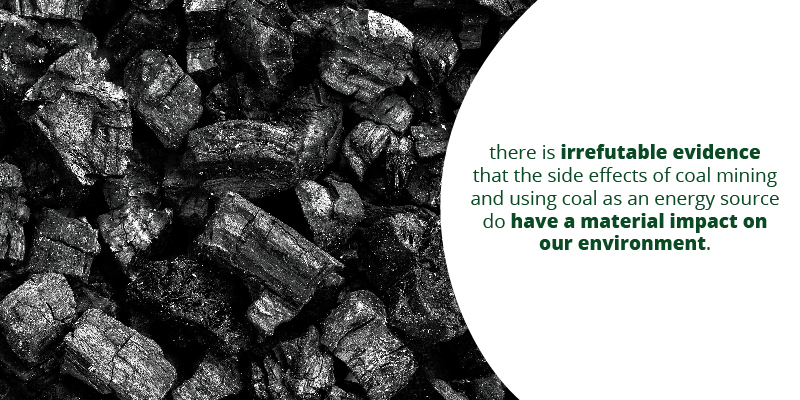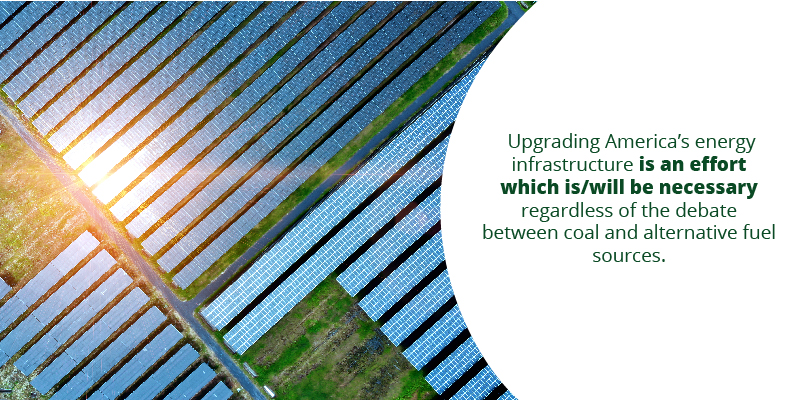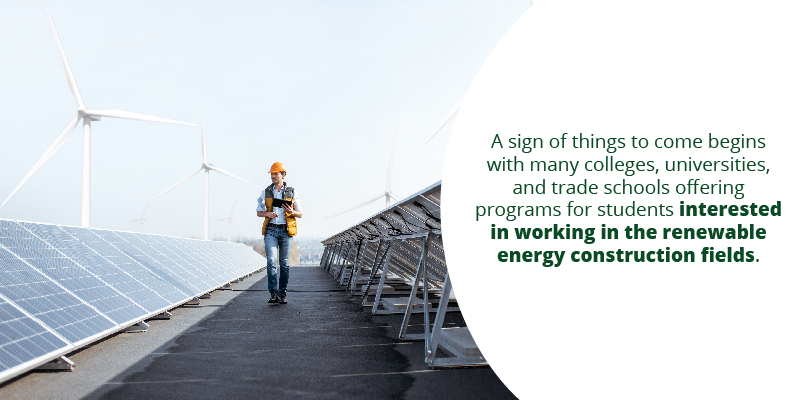
“Coal country” can refer to any areas where coal has historically been a major business. For those of us from the American Northeast, coal country usually refers to the Appalachian areas of Pennsylvania, West Virginia, Ohio, Kentucky, reaching southwest all the way to Mississippi. This corridor has been a staple of American industry for well over a century. Yet modern energy infrastructure upgrades and a shifting view on fossil fuels have changed the landscape of coal country.
With all of this in mind, today we will take a look at how coal country is modernizing, how alternative energy infrastructure is taking root across American, and examine current and future energy construction projects are impacting the commercial real estate market.
Climate Change’s Impact on Coal Country

Politics aside, there is irrefutable evidence that the side effects of coal mining and using coal as an energy source do have a material impact on our environment. According to the U.S. Energy Information Administration (a federal agency), coal emissions include sulfur dioxide, nitrogen oxides, particulates, carbon dioxide, mercury, heavy metals, fly ash, and bottom ash. It should also be stated that many modern efforts within the coal industry have been made to burn “clean” coal, which reduces, but does not eliminate, many of these emissions.
As federal and state regulations tighten on coal and other fossil fuel emissions, where does that leave the businesses, employees, and economies of coal country? Thankfully, where there are alternatives to coal, there are also alternative economic opportunities. For example, New York State has recently doubled down on their commitment to clean energy, a decision that is “expected to create $3.2 billion in economic activity and more than 1,600 jobs.”
While such a massive change may take longer to implement in states like Pennsylvania and Kentucky, the impact such a paradigm shift would have on energy infrastructure and energy jobs in coal country would be significant. The workforce that previously made their living in the coal industry might have opportunities in new, renewable energy sectors.
Renewable Energy Infrastructure and Commercial Real Estate
So far we have mostly been talking broad strokes and how coal transitioning into alternative fuel sources might affect the working men and women in coal country. From the perspective of commercial real estate, the shift from traditional fossil fuels to alternative fuel sources could be similarly significant. Let’s take a look at how shifting regulations and public perception on alternative fuel sources might influence the commercial real estate in Western PA and across the country in the years to come:
Energy infrastructure will need massive updates

It is no great secret that America’s infrastructure is aging. Our energy sector is certainly no exception to this rule. Upgrading America’s energy infrastructure is an effort which is/will be necessary regardless of the debate between coal and alternative fuel sources. From a CRE angle, this means that infrastructures will either require massive updates, new construction, or most likely, both. It should also be noted that the energy sector is just one area of our infrastructure in need of updating. Government buildings, roads, bridges, schools, and many other government funded expenditures must compete for limited funding.
Energy megaprojects likely to continue in 2020 and beyond
Oil, gas, coal, and alternative fuel technology have advanced to the point that facilities must adapt to keep up. Due to this and many other reasons, constructiondive.com states: “energy-related megaprojects are expected to make up a big part of the U.S. construction industry in coming years.” With a governmental commitment to revamping our infrastructure and an emphasis on adapting to new technologies, the CRE market for energy related construction and renovation efforts should remain robust for years to come.
Education and other resources are available for sustainable infrastructure

A sign of things to come begins with many colleges, universities, and trade schools offering programs for students interested in working in the renewable energy construction fields. For example, The University of Washington offers a master’s program titled: “Construction, Energy, and Sustainable Infrastructure” through their Civil & Environmental Engineering school. Like many similar programs, it is available on-campus or through online courses.
While a master’s program might not be for everyone, these types of opportunities will likely play a huge role in transitioning the workforce in American towns across coal country from their experiences in the coal industry to a new field working in renewable energy or sustainable infrastructure construction. A qualified workforce will then create greater opportunities to improve our nation’s infrastructure, greater opportunities for commercial real estate investors, and ultimately will benefit our region’s economy.
Going Forward
Again trying to avoid politics or any other contentious topics, it is very likely that a transition away from fossil fuels in favor of renewable energy sources is a matter of when, not if. For those of us living in coal country, this can be viewed as an opportunity to invest in our future. With the right planning, changing our local energy infrastructure can lead to economic growth, more jobs, and of course commercial real estate opportunities.



